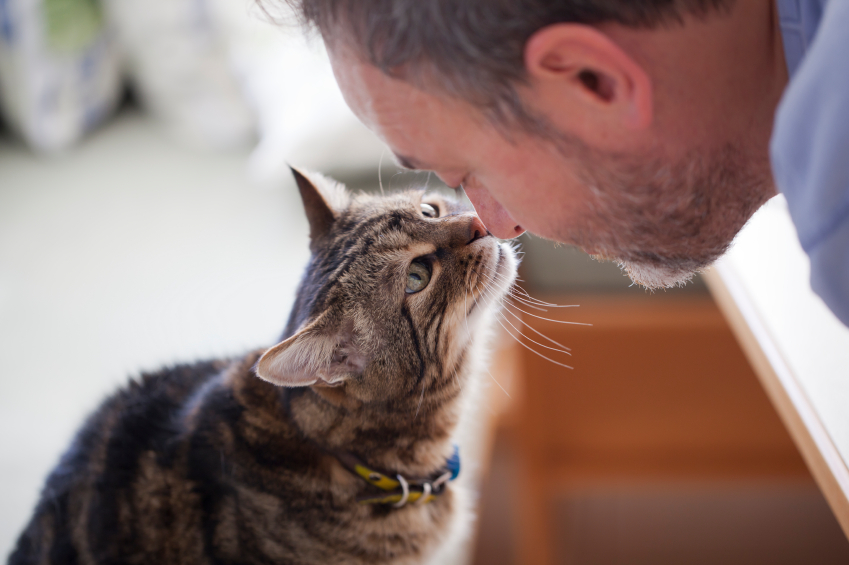Cats are territorial and independent creatures. Feral cats guard large territories and do not seek other cats; actually they avoid contact as much as possible. These characteristics can make introducing a new cat to your home a stressful experience that requires a lot of patience. Together we can make this transition as stress (and injury!) free as possible for all involved. This is not a short process and will require considerable effort at the beginning but the payoff of happy cats is definitely worth it!
Before the introduction there are a few things you should have on hand. For each cat you should have: water bowl, food bowl, litter box, scratching post, bed and toys. A squirt bottle to help discourage fighting and a screen door or baby gates to create the barrier required later in this process will be helpful. Other items can help such as: Feliway spray, wipes or diffusers. Feliway contains a feline hormone that promotes calm among kitties.
The first impression is very important and must be controlled by you. The cats should be able to smell and hear each other but NOT touch or see each other. This is best managed by keeping one cat in a separate room. Feed both cats near the door, this includes special treats like tuna or their favourite snack. Continue to do this for a few days (2-3 minimum), then you can switch their locations so the cats can get used to the smell of each other and the new cat can explore your home.
One technique that can help is to inter-mingle their scents. This is accomplished by gently rubbing one cat with a towel and then rubbing the other cat with the same towel. Now bring the towel back to the first cat and rub her with it again.
After the first couple days, playing with each cat near the door is a good idea. Allowing the cats to paw at toys under the door and eventually to paw at each other (no claws extended!) will be helpful.
After a week, if there are no signs of aggression at the door (hissing, growling, charging, etc.), it is time to let the cats see each other. This is best achieved through a barrier of some type; a screen door, or two baby gates stacked on top of each other in the door frame work well. It is helpful to have another human to assist you at this point. Start the introduction by placing each cat a few feet from the barrier. Call to each cat as you toss treats to them, aiming behind them so you don’t create a frenzy for treats near the barrier. Continue to feed the cats and play with them on either side, getting closer to the barrier gradually.
Your next step is to let the cats interact without the barrier between them. A good time to do this is when the cats are calm, after a meal or a long play session. Have a squirt bottle nearby in case a fight breaks out. Never get in the middle of a cat fight as you will likely end up bit or scratched. Cat bites can be nasty wounds to deal with, often requiring antibiotics. As the cats are more comfortable with each other and their surroundings, allow them more face to face time. This is the time to monitor the situation for signs of bullying. If one cat is hiding constantly or if one is harassing the other we may need to go back behind the barriers (or solid door) and try the process again. Your patience here will pay off in the long run!
If you have multiple cats already, the face to face introductions should be done individually before you allow the cats to mingle as a clowder (that’s a group of cats). Remember to have multiple resting areas and perches for your kitties as well as a litter box for each cat. All kitties should be happy and comfortable in their home.
If at any point you are struggling or have questions, do not hesitate to contact the clinic at 306-373-3500 for assistance. Congratulations on your new addition!
Written by: Kaila Montgomerie, RVT




